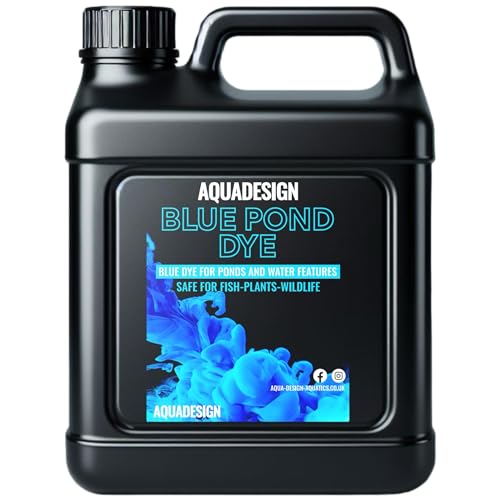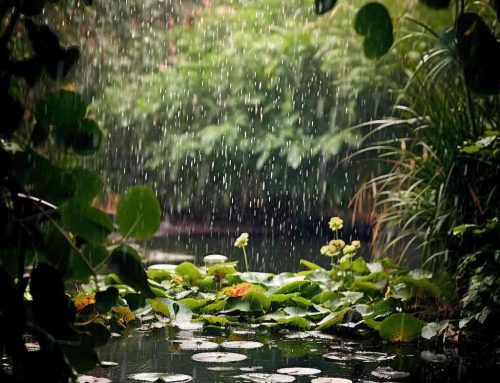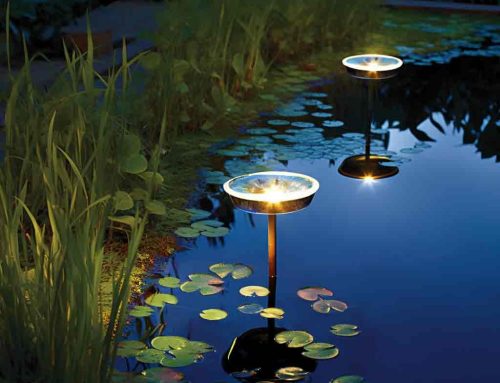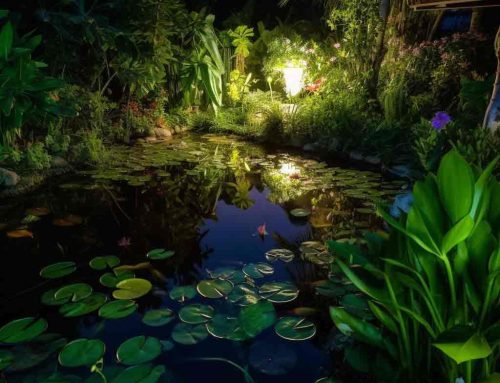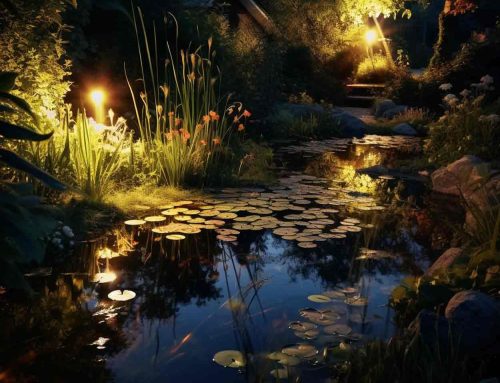Colouring your pond water can transform your aquatic paradise into a stunning visual experience. This article explores the fascinating world of pond dyes and guides you through the process of colouring your pond water, while ensuring the health and well-being of your pond’s inhabitants.
Jump to specific section
Why colour your pond water?
Adding dye to your pond or lake can offer several benefits, including:
- Aesthetic appeal: Pond dyes can create a visually striking effect, enhancing the overall beauty of your pond and creating a unique focal point in your garden.
- Algae control: Pond dyes can help reduce sunlight penetration, limiting the growth of algae and improving water quality.
- Fish protection: By limiting sunlight penetration, pond dyes can also provide a protective barrier for your fish, reducing the risk of predation and creating a more comfortable environment.
Choosing the right pond dye
There is a variety of pond dyes available on the market, typically in shades of blue, black, or a combination of both. When selecting a pond dye, consider the following factors:
- Safety: Ensure that the pond dye you choose is non-toxic, environmentally friendly, and safe for your fish, plants, and other aquatic life.
- Colour preference: Choose a colour that complements the surrounding landscape and achieves the desired visual effect.
- Concentration: Pond dyes are available in liquid, powder, or water-soluble packet forms. Choose a format that is easy to apply and offers the desired colour intensity.
How to add pond dye to your water
Adding dye to your pond or lake is a simple and straightforward process:
- Pour the concentrated pond dye into the water in several spots along the pond’s edge. This will help ensure even distribution and blending of the dye.
- Alternatively, use water-soluble pond dye packets. Simply toss the packets into the water, and they will dissolve, releasing the dye.
- Repeat this process every four to six weeks, depending on rainfall and evaporation, to maintain the desired colour intensity.
Tips for using pond dye
To ensure the best results when using pond dye, keep these tips in mind:
- Monitor water quality: Regularly test your pond water to ensure that the dye is not adversely affecting water quality or the health of your aquatic life.
- Adjust application frequency: Depending on your local climate and water conditions, you may need to adjust the frequency of dye application to maintain the desired colour intensity.
- Consider seasonal changes: The appearance of your pond dye may change with the seasons, as the angle and intensity of sunlight vary. Adjust your dye application accordingly to achieve the desired effect.
Colouring your pond water can be a delightful way to enhance the visual appeal of your aquatic sanctuary. By choosing the right pond dye and following the proper application techniques, you can create a stunning and vibrant environment that both you and your pond’s inhabitants will enjoy.
The Pros and Cons of Colouring Your Pond Water: A Balanced Perspective
n our quest to create the perfect aquatic paradise, we may encounter the idea of colouring our pond water. While this may initially seem like an unconventional choice, it is essential to understand the pros and cons before deciding whether this approach suits your pond-keeping vision. This article delves deeper into the advantages and disadvantages of using pond dyes, helping you make an informed decision for your natural-looking pond.
Pros of Colouring Your Pond Water
- Enhanced aesthetic appeal: Pond dyes can create a unique visual effect, adding depth and vibrancy to your pond. This can make your pond stand out, creating a stunning focal point in your garden.
- Algae control: Pond dyes can help reduce sunlight penetration, limiting the growth of algae. This can improve water quality and reduce the need for chemical algaecides, contributing to a healthier pond ecosystem.
- Fish protection: By limiting sunlight penetration, pond dyes can provide a protective barrier for your fish, reducing the risk of predation and creating a more comfortable environment for your aquatic friends.
- Low maintenance: Pond dyes are relatively low maintenance, requiring only occasional reapplication to maintain the desired colour intensity.
Cons of Colouring Your Pond Water
- Loss of natural appearance: Adding dye to your pond water can detract from the natural look you may be trying to achieve, making it appear less authentic and more artificial.
- Reduced visibility: Using pond dyes may reduce visibility into the pond, making it more challenging to observe and monitor your fish and aquatic plants. This can also impact the overall aesthetic, as the beauty of your fish and plants may be partially obscured.
- Potential impact on plant growth: While pond dyes can help control algae growth, they may also reduce sunlight penetration to the point where it affects the growth of desirable aquatic plants. This could lead to an imbalanced pond ecosystem.
- Compatibility concerns: Although most pond dyes are non-toxic and safe for aquatic life, it is crucial to carefully research and choose a dye that is compatible with your specific pond inhabitants and plants.
Conclusion
Colouring your pond water can offer several benefits, such as enhanced visual appeal, algae control, and fish protection. However, there are also potential drawbacks, including a loss of natural appearance, reduced visibility, and potential impacts on plant growth. Ultimately, the decision to use pond dyes depends on your personal preferences and priorities for your pond-keeping experience. By carefully weighing the pros and cons, you can determine whether colouring your pond water aligns with your vision for a natural-looking aquatic haven.





